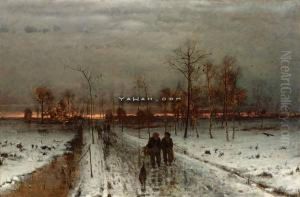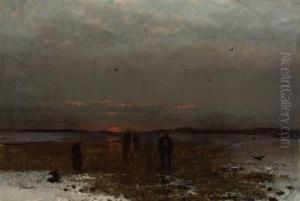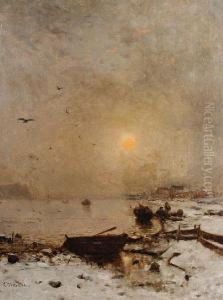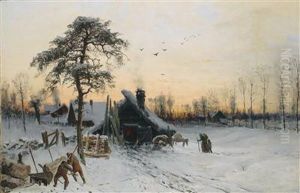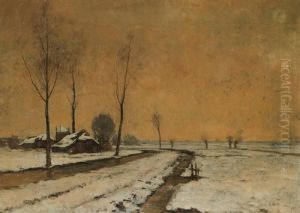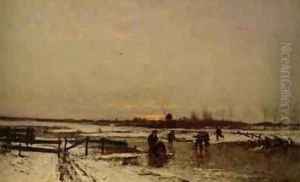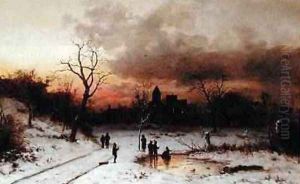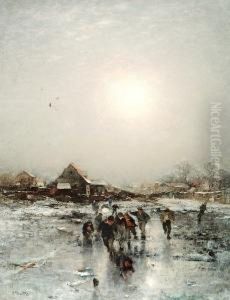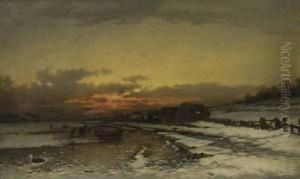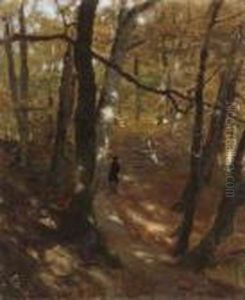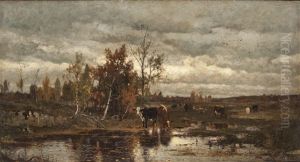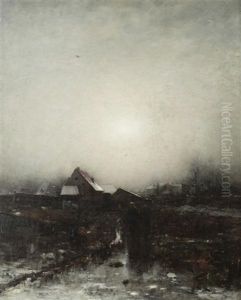Ludwig Munthe Paintings
Ludwig Munthe was a distinguished Norwegian landscape painter associated with the Düsseldorf school of painting. Born on March 15, 1841, in Ålesund, Norway, he became known for his evocative depictions of Norwegian rural life and landscapes. Munthe showed an early interest in art and pursued his passion by studying at the Royal School of Drawing in Christiania (now Oslo). He subsequently moved to Düsseldorf, Germany, which was a major center for art education and painting at the time, to further his studies under the tutelage of renowned artists.
In Düsseldorf, Munthe was influenced by the works of fellow Norwegian landscape painter Hans Gude, and other prominent artists of the Düsseldorf school, which emphasized detailed and meticulously crafted scenes of nature. Munthe's work was characterized by a serene, almost poetic quality, often featuring snowy landscapes and rural cottages, reflecting the quiet beauty of the Norwegian countryside.
Throughout his career, Munthe exhibited his work in Norway and abroad, gaining acclaim for his ability to capture the subtle interplay of light and atmosphere. Despite his success in Germany, Munthe remained deeply connected to his Norwegian roots, and his paintings often evoked a strong sense of national romanticism.
Munthe's paintings were not just popular in his lifetime; they continue to be appreciated for their technical skill and distinctive style. His works can be found in various art collections, museums, and galleries in Norway and Germany, where they serve as a testament to his contribution to the landscape genre.
Ludwig Munthe's life was cut short when he died on February 10, 1896, at the age of 54. His legacy lives on through his art, which continues to inspire and captivate audiences with its timeless portrayal of the natural world.

